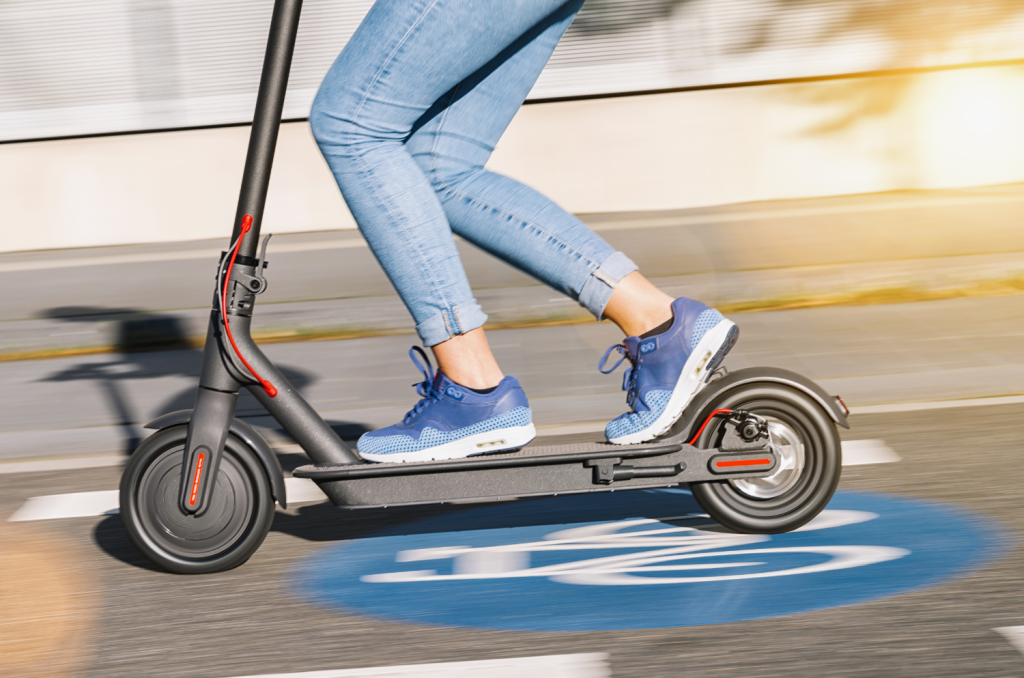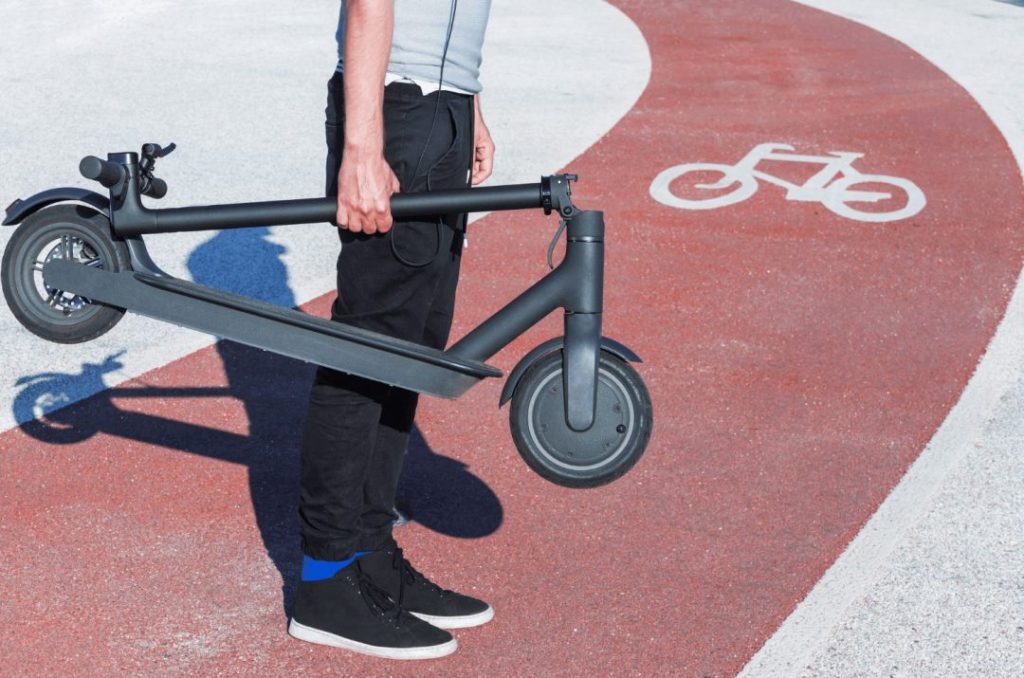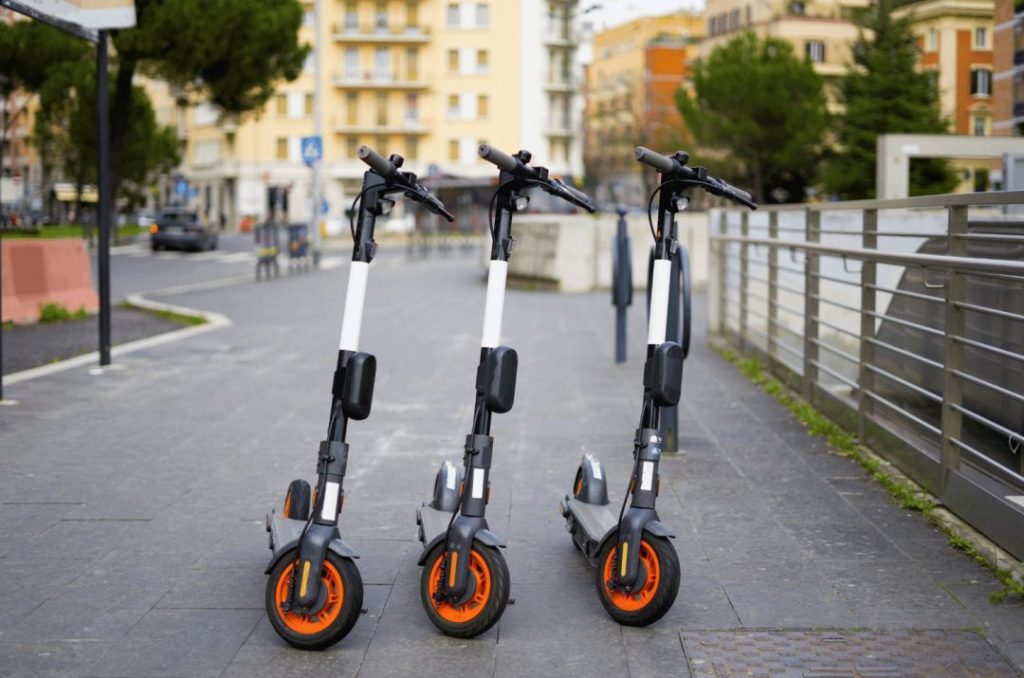Today, we are going to address a frequently asked question: Can you enter a hospital with a scooter?
The use of electric scooters is increasingly widespread in society. They are convenient, agile, help us avoid traffic jams, and spare us the hassle of finding parking. However, despite their growing popularity, many questions remain about their proper use
At Solum, we take pride not only in being pioneers in the development of sustainable technologies but also in providing answers to questions related to urban and mobility topics. Since our founding in 2019, we have been committed to creating innovative solutions to make cities more efficient and sustainable.
Regulations and Policies
First of all, reviewing local regulations in public spaces and analyzing hospital policies regarding scooter entry are essential for understanding and improving mobility in urban and healthcare environments.
Personal Mobility Vehicles
Also known as PMVs, these include electric scooters. PMVs are vehicles with one or more wheels designed for a single user, powered exclusively by electric motors, and capable of reaching speeds between 6 and 25 km/h.
Each municipality can regulate PMV use, such as electric scooters, specifically, though all users must comply with minimum conditions. Therefore, it is essential to be familiar with basic regulations before using such vehicles to ensure safe urban mobility.
The prohibition of riding on sidewalks, pedestrian zones, and other restricted areas is a common rule. Authorized paths will be indicated by municipal ordinances. In the absence of such ordinances, riding on any urban roadway is allowed. Additionally, as mentioned earlier, PMV speeds must range between 6 and 25 km/h.
It is essential to know and adhere to these regulations to promote safe mobility in accordance with established rules. Thanks to these measures, we have seen a reduction in fatalities over the past three years, compared to 2020, when eight deaths were recorded involving PMVs—seven in urban areas and one in interurban areas where their use is prohibited. According to the Spanish Directorate-General for Traffic (DGT), this figure is now one person in both urban and interurban areas.

Technical Requirements for Vehicles
The DGT has developed a Manual of Specifications for personal mobility vehicles. After its publication and a 24-month period, all PMVs must carry a circulation certificate to ensure minimum safety requirements.
PMVs must be equipped with a braking system, an acoustic warning device (bell), and lights and reflective devices both front and rear. Furthermore, wearing a helmet is recommended, even if the municipal ordinance does not mandate it, and having liability insurance is advised.
Complying with these guidelines significantly contributes to ensuring the safety of both users and pedestrians in urban environments. Additionally, regular maintenance of electric scooters and periodic checks of their components are crucial.
Violations and Associated Penalties
Failure to comply with these requirements or regulations may result in various consequences:
- Riding an electric scooter under the influence of alcohol or drugs can result in fines ranging from €500 to €1,000, depending on the blood alcohol level. For drug use, the fine is always €1,000. If tested positive, the vehicle will be immobilized, just like any other vehicle.
- Using a mobile phone or any communication device while riding a scooter incurs a €200 fine.
- A €200 fine is also imposed for wearing headphones, riding at night without lights or reflective clothing, or failing to wear a helmet if it is mandatory under the municipal ordinance.
Can You Enter a Hospital with a Scooter?
In general, entering hospitals with scooters is allowed, but this may vary depending on the specific hospital. Some hospitals may have policies that prohibit or restrict the use of scooters within their facilities.
Above all, common sense is essential. Scooter users are encouraged to be considerate and respectful of patients and hospital staff. It is important to avoid using scooters in crowded areas or places where they could pose risks or disruptions. Users may be asked to park their scooters in designated areas.
If the hospital has specific policies regarding scooter use, each user must adhere to these rules. Policies may include leaving the scooter in a locker before entering the hospital or parking it in designated spaces. This trend is becoming increasingly common in cities. For example, Solum provides sustainable, secure, and convenient charging solutions.

Parking for PMVs at Hospitals
The use of electric scooters is transforming how people navigate cities. With the increasing number of PMV users, more facilities are being built to accommodate these vehicles, encouraging those who opt for this sustainable mode of transportation.
Many institutions, both public and private, are adapting their facilities to accommodate electric scooters and other PMVs. As a result, parking for PMVs is now common in shopping centers, workplaces, and other venues.
Solum: A Solution for Parking Scooters at Medical Centers
To promote sustainable mobility, Solum is a Spanish tech company created with the goal of maximizing available urban space to generate renewable energy.
As the use of electric scooters has grown, so has the need for safe and convenient parking options. Solum addresses this need with its PMV parking facilities, where users can park and charge their scooters using solar-powered flooring.
Currently, Solum has implemented several notable projects in Spain and beyond, including charging solutions at shopping malls, universities, and potentially, in the near future, hospitals. More hospitals and medical centers are adapting to this new reality, aiming to facilitate mobility and encourage electric scooter use—whether for patients or even hospital staff.

Advantages Offered by Solum
- Autonomous: Thanks to its solar-powered Arena flooring and internal batteries, it does not require a connection to the power grid or any external support.
- Sustainable: It generates its own energy using solar-powered Arena flooring installed around it.
- Secure: Featuring an intelligent, anti-theft locking system that secures the vehicle with a stainless steel shaft, providing users with excellent security.
- Plug & Play: Easy to install and ready for use in just one day.
- Multi-Vehicle: The station can accommodate both electric scooters and bicycles.
- Smart: Through the miSolum app and platform, users can monitor and control all station functionalities.
Cities are transforming, PMVs are the future, and the future is already here. If you want to learn more about us, visit our website or check out our blog, where we discuss the latest developments in sustainable mobility.







